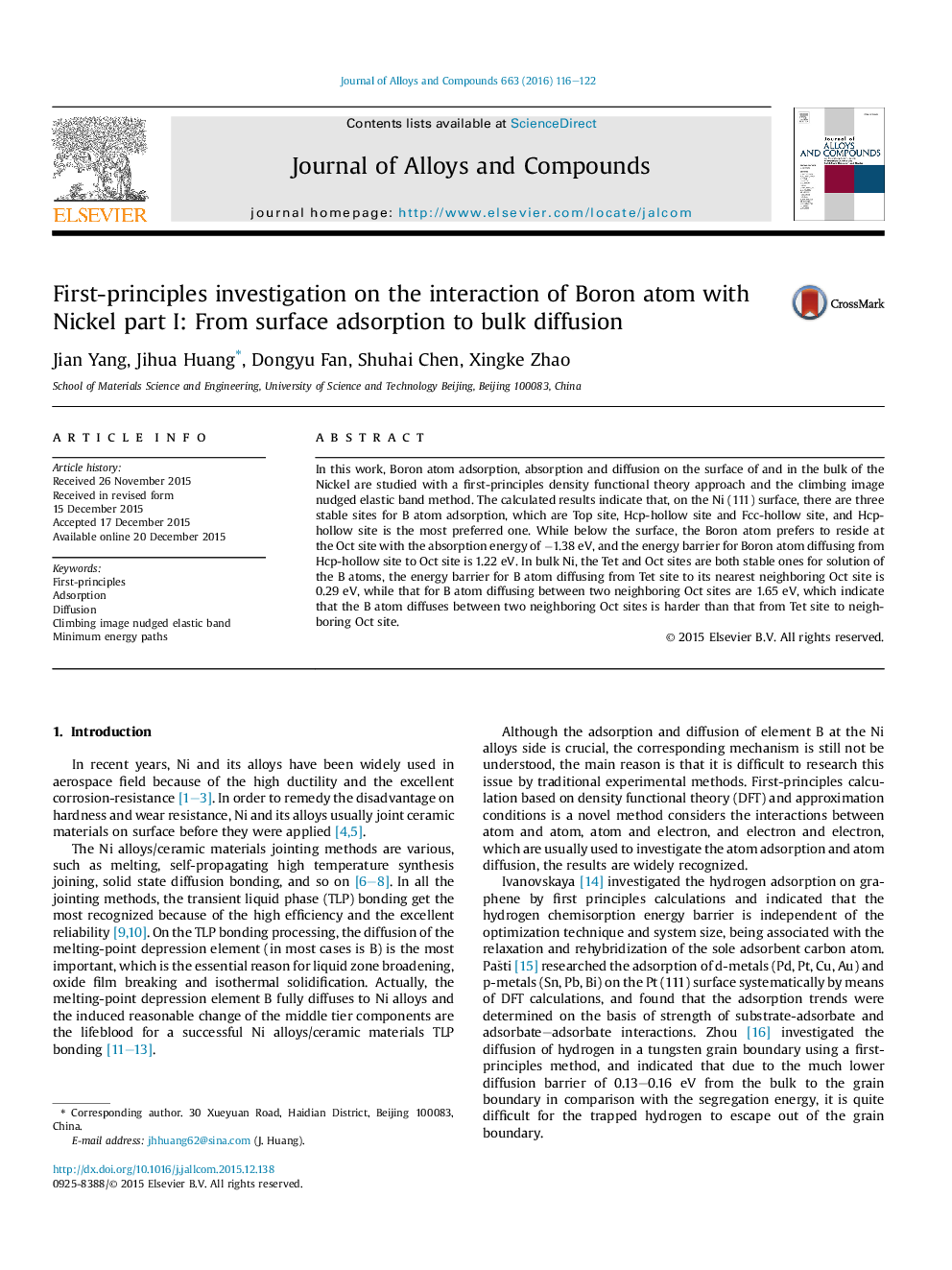| کد مقاله | کد نشریه | سال انتشار | مقاله انگلیسی | نسخه تمام متن |
|---|---|---|---|---|
| 1606909 | 1516230 | 2016 | 7 صفحه PDF | دانلود رایگان |
• The entire processes for adsorption, absorption and solution were investigated systematically.
• All adsorption, absorption and solution models were established.
• Adsorption/absorption/solution energy and Mulliken charge were calculated to analyze stability.
• CI-NEB method was adopted to determine the MEPs and the corresponding energy barriers.
In this work, Boron atom adsorption, absorption and diffusion on the surface of and in the bulk of the Nickel are studied with a first-principles density functional theory approach and the climbing image nudged elastic band method. The calculated results indicate that, on the Ni (111) surface, there are three stable sites for B atom adsorption, which are Top site, Hcp-hollow site and Fcc-hollow site, and Hcp-hollow site is the most preferred one. While below the surface, the Boron atom prefers to reside at the Oct site with the absorption energy of −1.38 eV, and the energy barrier for Boron atom diffusing from Hcp-hollow site to Oct site is 1.22 eV. In bulk Ni, the Tet and Oct sites are both stable ones for solution of the B atoms, the energy barrier for B atom diffusing from Tet site to its nearest neighboring Oct site is 0.29 eV, while that for B atom diffusing between two neighboring Oct sites are 1.65 eV, which indicate that the B atom diffuses between two neighboring Oct sites is harder than that from Tet site to neighboring Oct site.
The energy barriers for the B atoms moving toward the most preferred Hcp-hollow site from Top site and Fcc-hollow site on surface are 0.29 eV and 0.61 eV, respectively; That for B atom transferring from Hcp-hollow site (surface) to Oct site (subsurface) is 1.22 eV; The energy barriers for the B atoms moving from the Tet site to its nearest neighboring Oct site and between two neighboring Oct sites are 0.29 eV and 1.65 eV, respectively.Figure optionsDownload as PowerPoint slide
Journal: Journal of Alloys and Compounds - Volume 663, 5 April 2016, Pages 116–122
